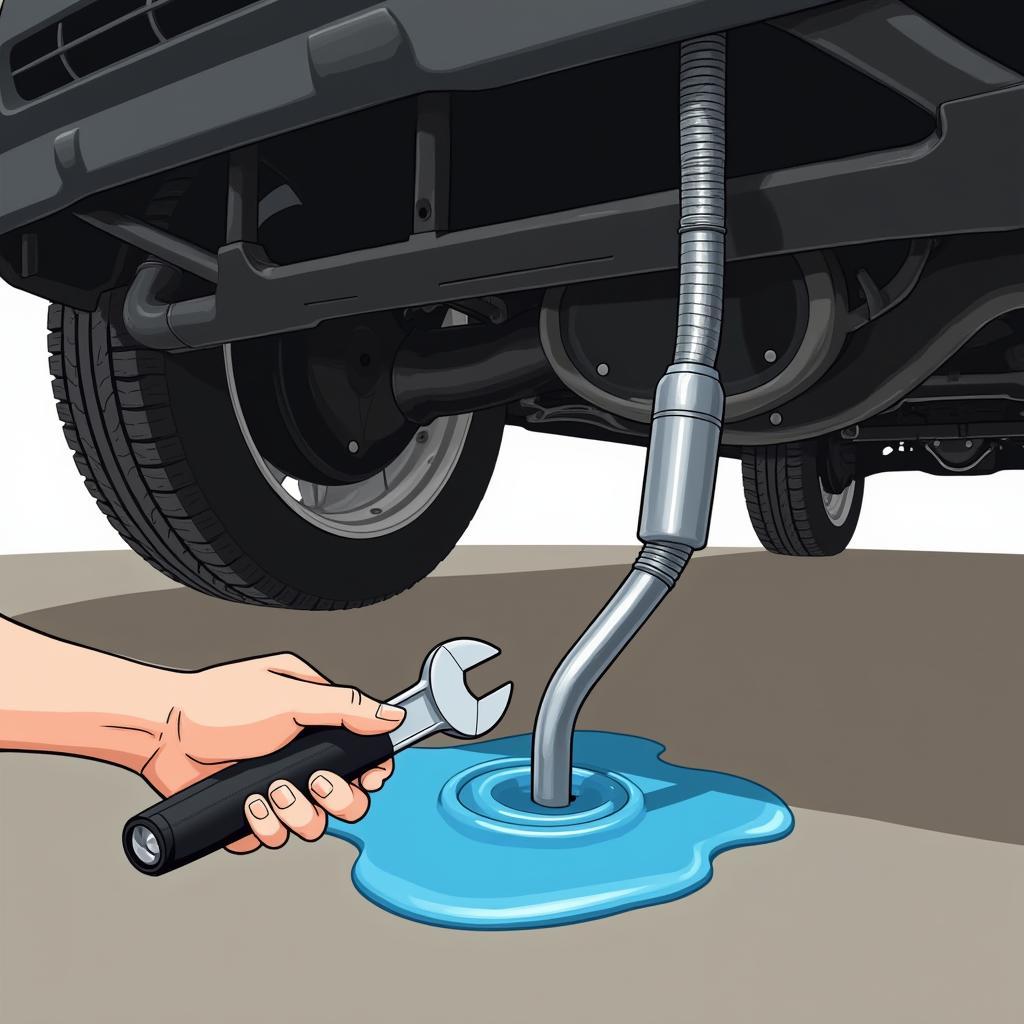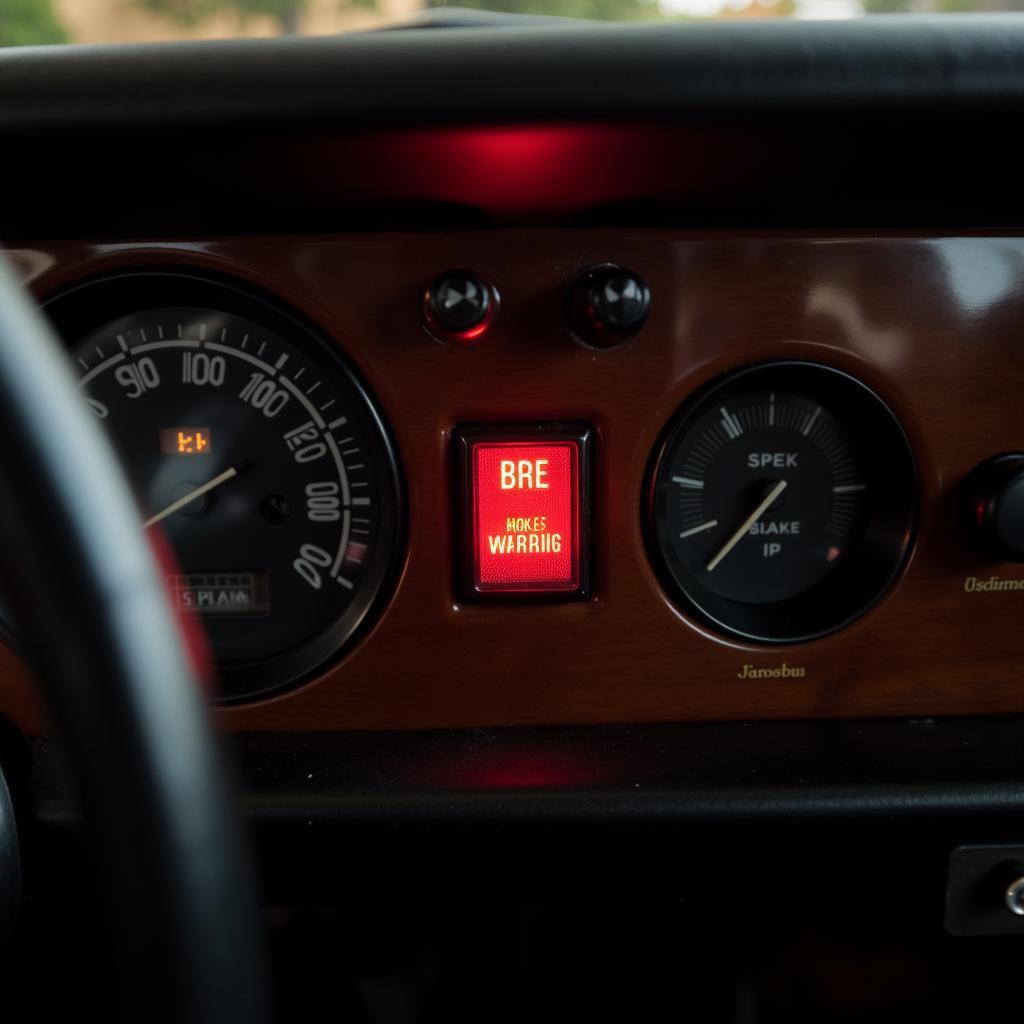Seeing a “low brake fluid” warning light flash on your dashboard can be unnerving. It’s a clear signal that something isn’t right with your car’s braking system and requires immediate attention. Ignoring this warning could jeopardize your safety and lead to costly repairs. This article will guide you through the potential causes, solutions, and preventive measures related to the “low brake fluid warning came on” message, empowering you with the knowledge to address this issue effectively.
Understanding Your Brake Fluid System
Before we delve into the warning itself, it’s crucial to understand the vital role brake fluid plays. This hydraulic fluid acts as the lifeblood of your braking system, transmitting the force applied to your brake pedal to the brake calipers, which in turn squeeze the brake pads against the rotors, slowing or stopping your vehicle.
The brake fluid operates within a closed system of components, including:
- Master cylinder: The heart of the system, receiving brake pedal force and pressurizing the fluid.
- Brake lines: These carry the pressurized fluid from the master cylinder to the wheels.
- Brake calipers: These house the brake pistons, which push the brake pads.
- Wheel cylinders: Similar to calipers, these activate drum brakes.
Why Is My Low Brake Fluid Warning Light On?
A low brake fluid level is the most common reason for the warning light. However, this generally indicates an underlying issue that needs addressing, as brake fluid doesn’t simply vanish. Here are the primary culprits:
1. Brake Pad Wear
Worn brake pads are the most frequent cause of a low brake fluid warning. As your brake pads wear down, the brake calipers need to extend further to engage the rotors. This extension requires more brake fluid, leading to a lower fluid level in the reservoir.
2. Brake Fluid Leak
Your brake system, while closed, isn’t impervious to leaks. Age, corrosion, or damage can create weak points in brake lines, hoses, calipers, or even the master cylinder, allowing brake fluid to escape.
Expert Insight: “Never underestimate the importance of regular brake inspections,” advises seasoned mechanic, John Miller. “Even a small leak can escalate quickly, compromising braking performance and safety.”
 Brake Fluid Leak Under Car
Brake Fluid Leak Under Car
3. Internal Leak
While less common, internal leaks within the master cylinder or wheel cylinders can also deplete brake fluid. These leaks often manifest as a soft or spongy brake pedal feel.
4. New Brake Pads
Ironically, even installing new brake pads can sometimes trigger the warning light. This happens when the brake calipers haven’t been properly retracted during pad replacement, causing an artificially low fluid level in the reservoir.
What to Do When the Low Brake Fluid Warning Appears
If your low brake fluid warning light illuminates, take these immediate steps:
- Pull over safely: Find a safe location away from traffic to assess the situation.
- Check the brake fluid level: With the engine off, locate the brake fluid reservoir (refer to your owner’s manual) and visually inspect the fluid level. It should be between the “MIN” and “MAX” lines.
- Do not drive if the fluid is low: Driving with low brake fluid can lead to brake failure. Call for a tow to your mechanic or a trusted service center.
- Avoid adding brake fluid without a proper diagnosis: While tempting, topping off the fluid without addressing the root cause is a temporary fix that could worsen the problem.
Diagnosing and Fixing the Issue
A qualified mechanic will perform a thorough inspection to pinpoint the source of the problem. This typically involves:
- Visual inspection: Checking for visible leaks, worn brake lines, or damaged components.
- Pressure testing: Using specialized tools to pressurize the system and detect even the smallest leaks.
- Inspecting the brake pads and rotors: Determining if wear and tear is contributing to low fluid levels.
Once diagnosed, the mechanic will recommend the necessary repairs, which could include:
- Replacing worn brake pads and rotors
- Repairing or replacing leaking brake lines, hoses, or cylinders
- Rebuilding or replacing the master cylinder
Preventing Low Brake Fluid Warnings
Preventing is always better than curing. Here’s how to keep your brake fluid system in top shape:
- Regular brake inspections: Schedule a brake system inspection at least once a year, or more frequently if you drive in demanding conditions.
- Heed warning signs: Never ignore warning lights or changes in brake pedal feel, such as a soft or spongy pedal.
- Quality brake fluid: Use the type and grade of brake fluid specified in your owner’s manual.
Frequently Asked Questions
Q: Can I drive a short distance with the low brake fluid warning light on?
A: It’s strongly advised against driving with a low brake fluid warning. Even a short distance poses a significant safety risk.
Q: How often should I change my brake fluid?
A: Most manufacturers recommend replacing brake fluid every 2-3 years or as specified in your owner’s manual.
Q: Can I add brake fluid myself?
A: While possible, it’s best left to a professional. Adding the wrong type of fluid or overfilling can damage your brake system.
Q: Why is my brake pedal going to the floor?
A: This is a serious indication of a major brake system issue, potentially a complete loss of brake fluid. Stop driving immediately and call for assistance.
Conclusion
A “low brake fluid” warning is a serious matter that demands immediate attention. Understanding its causes and taking prompt action can prevent costly repairs and ensure your safety on the road. Regular maintenance and proactive care of your braking system are essential for safe and worry-free driving.

